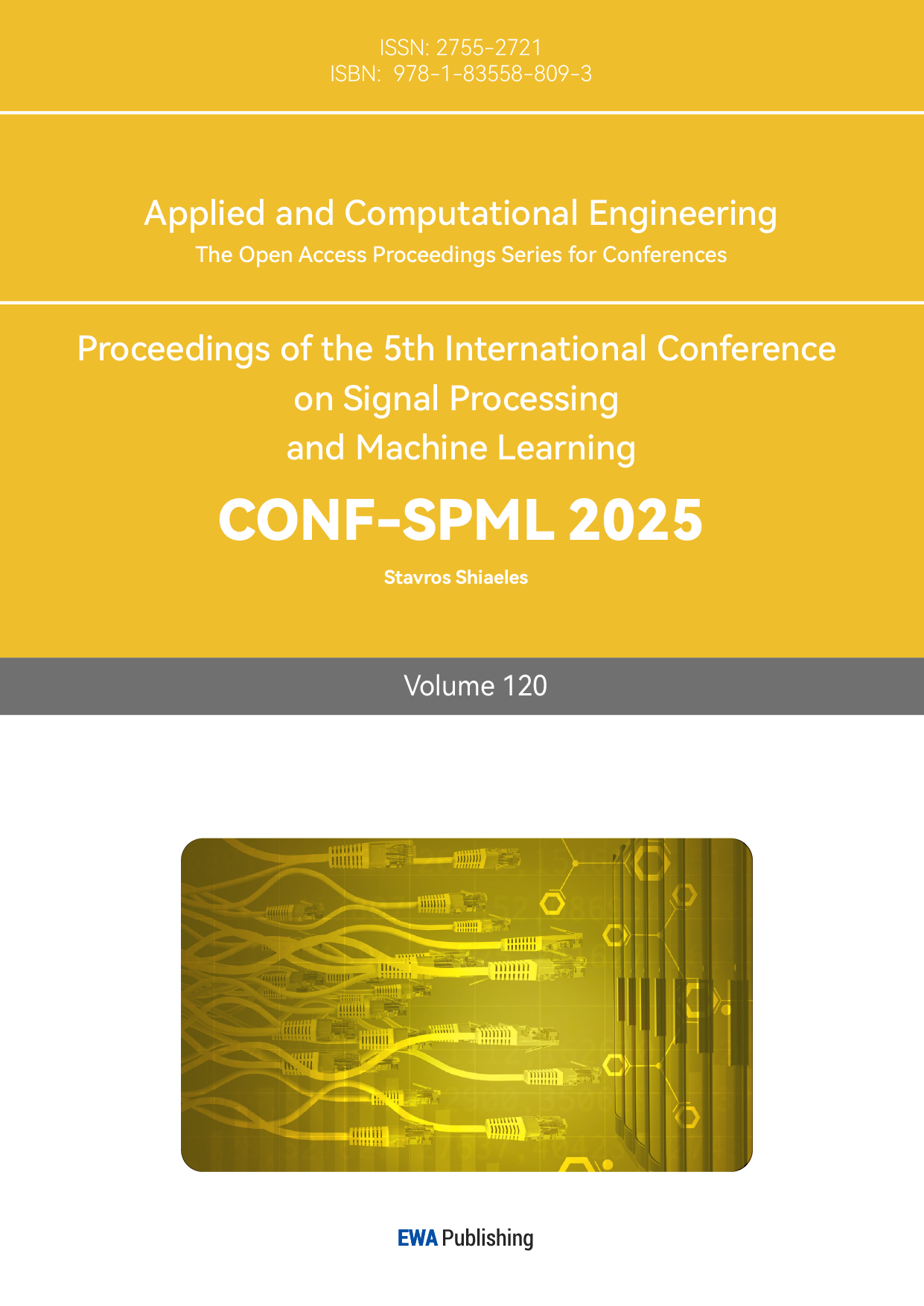1. Introduction
In today's rapidly evolving information technology landscape, the waves of big data and artificial intelligence are reshaping various sectors of the socio-economic domain at an unprecedented pace. Data, as the core driving force of this transformation, has become increasingly important. However, facing massive and diverse datasets, especially those containing multiple modalities such as text, images, audio, and video, how to efficiently collect, process, and push data has become an urgent issue to address.
Traditional data processing methods often confine themselves to a single modality, making it difficult to fully capture and analyze the multidimensional information within the data. This significantly limits the full exploration and utilization of the data's value. Therefore, with the rise of multimodal data processing technologies, designing and implementing a system capable of integrating, analyzing, and pushing data across different modalities has become particularly urgent.
Against this backdrop, this research focuses on the design and implementation of a Python-based multimodal data collection and push system. The system aims to collect and integrate multimodal data from diversified sources through automated means, using algorithms and technologies for in-depth processing and analysis, ultimately achieving the tasks of collecting and pushing relevant information. This can significantly enhance the efficiency of data utilization. The system is committed to providing real-time performance, ensuring the completion of multimodal data collection, processing, and pushing tasks within a short timeframe. The paper will try to optimize algorithm and architecture designs to meet the needs of small-scale users simultaneously. Additionally, the system features strong scalability, easily accommodating future business growth challenges. By continuously collecting user feedback and performing data analysis, the recommendation algorithm will be continually optimized to improve accuracy and personalization, offering users more thoughtful and precise information services.
2. Related Works
2.1. Domestic Research Status
In China, with the rapid development of big data and artificial intelligence technologies, research on multimodal data collection and push systems has gradually become a hot topic. In recent years, domestic scholars have made significant progress in fields such as multimodal data fusion, sentiment analysis, and intelligent learning analytics, providing a solid theoretical foundation and technical support for the design and implementation of Python-based multimodal data collection and push systems.
Yu Wenjing and Zhou Jinzhi focused their research on sentiment analysis of online learning among college students, proposing a sentiment analysis model based on multimodal data fusion. This model integrates various types of data such as text, images, and videos, utilizing deep learning algorithms for sentiment recognition [1]. Additionally, Li Jiayao explored multimodal learning analytics based on intelligent technology, analyzing the connotations, models, and challenges faced by multimodal learning analytics [2]. She pointed out that multimodal learning analytics can comprehensively capture learners' behaviors, emotional states, and cognitive processes, providing strong support for personalized learning. Song Haomeng noted that China has made significant progress in the collection and processing of multimodal data [3]. He emphasized that with the development of deep learning technologies, models based on Convolutional Neural Networks (CNN) and Recurrent Neural Networks (RNN) have shown excellent performance in image and text processing [4]. Liu Bangjian focused his research on the application of multimodal data in intelligent recommendation systems [5]. He believes that combining users' historical behavioral data and multimodal content features can significantly improve the accuracy and personalization of recommendations.
2.2. International Research Status
Yuan H focused on the application of multimodal data in social media analysis [5]. He argued that multimodal data on social media platforms (such as images, videos, texts, etc.) provide a rich source of information for user behavior analysis and content recommendations. Yuan H introduced a deep learning-based multimodal content recommendation system that can automatically analyze users' historical behaviors and interest preferences to push personalized multimedia content. He also pointed out that future research should pay more attention to privacy protection and algorithm interpretability.
Internationally, research on multimodal data collection and push systems has also received widespread attention. The work of Wiencrot et al. is particularly noteworthy; they successfully transformed a face-to-face survey targeting the elderly into a multimodal data collection approach [6]. This transformation not only improved the efficiency and quality of data collection but also demonstrated the flexibility and adaptability of multimodal data collection in addressing different populations and scenarios. This study provides valuable practical experience for the application of Python-based multimodal data collection and push systems in various fields.
Meanwhile, Li, Z. T. achieved significant results in the organization of multimodal and longitudinal data for a lung cancer risk community cohort [7]. By collecting and organizing multimodal data from various time points and sources, they provided rich data support for the early diagnosis of lung cancer. This research not only highlights the immense value of multimodal data in the field of medical diagnosis but also offers insights for the application of Python-based multimodal data collection and push systems in healthcare.
In summary, domestic and international scholars have conducted extensive and in-depth research on multimodal data collection, processing, analysis, and application, laying a solid foundation for the design and implementation of Python-based multimodal data collection and push systems. In the future, with continuous technological advancements and expanding application scenarios, Python-based multimodal data collection and push systems are expected to play an important role in more fields [8-10].
3. Related Technologies Introduction
3.1. Python Technology Introduction
Python is a flexible and versatile computer programming language, known for its strong syntactical features and high readability. It is very user-friendly for beginner programmers due to its simple and easy-to-understand syntax, wide applicability, and practicality. Python is an object-oriented programming language that can be used on multiple platforms. Compared to other languages, it is easy to install; installing Anaconda Navigator can solve the configuration of environment variables and other additional installation issues, while also offering better compatibility. Pycharm, included in Python, is also an excellent Python library for generating charts. Additionally, Python is an interactive language that can directly execute code in the interactive interface, and most Linux systems use Python as their basic configuration. Python is an object-oriented language, meaning it supports object-oriented styles or code encapsulation within objects.
JavaScript is a high-level, object-oriented programming language primarily used for dynamic interaction effects on webpages. As a scripting language, JavaScript is designed to interact with web pages, executing in the user’s browser to change the content, structure, and style of web pages. JavaScript is widely used in front-end development.
3.2. PostgreSQL
PostgreSQL is an advanced open-source relational database that supports complex queries and large-scale data processing. Key features of PostgreSQL include:
Advanced Functionality: Supports complex queries, indexing, triggers, and stored procedures.
Extensibility: Allows users to define data types, functions, and operators.
Standard Compatibility: Highly compliant with SQL standards.
Data Integrity: Strong transaction handling capabilities supporting ACID properties.
PostgreSQL is suitable for complex applications and scenarios requiring high data integrity.
Advantage: It uses JSON storage internally, so there are no length restrictions on data types.
4. Multimodal Data Collection and Push System Analysis
4.1. Performance Requirements Analysis
(1) The system software can be used 24 hours a day, 365 days a year;
(2) The system's software failure rate must be less than or equal to 10%.
(3) When users input incorrect information, the system should prompt and not crash.
4.2. Economic Feasibility
Software resources: Downloading Python, PostgreSQL, and Pycharm from official websites is free and open-source.
Hardware resources: There is already a computer capable of handling development work.
Participants: The development of this system involves two other participants, each responsible for different functional modules of making the process more efficient and easier to debug.
Benefit Evaluation: Using this system will significantly reduce the number of manual record-keeping staff, reducing labor costs and increasing profits.
4.3. Technical Feasibility
The development software chosen for this system is Python, and the development platform is Pycharm. Considering the efficiency and open-source nature of the database, PostgreSQL is used. Since the project is somewhat similar to web front-end development, JavaScript (with Python as a mediator) was utilized.
4.4. Operational Feasibility
The system is relatively easy to operate, using common window login interfaces, with most input forms being dropdown boxes. In some pages, information can be automatically generated without the need for input. The operation is straightforward, requiring only proficient Windows operating skills from the operator.
4.5. Functional Requirements Analysis
4.5.1. User Login. User launches the application
Enters username and password
System verifies user identity and permissions
User has the ability to add, delete, modify, and query personal data
4.5.2. Data Collection
Users choose data input methods (such as manual entry, file import, scanning paper documents, etc.)
For paper documents, the system uses OCR technology (detecting and recognizing text areas in images, converting them into editable text information) to identify content
Users enter multimodal information through the platform
The system performs preliminary verification and formatting of the input data
4.5.3. Data Storage
The collected data is stored in the local PostgreSQL database
At the same time, data is encrypted and synchronized to cloud servers
4.5.4. Data Processing and Analysis
Generate analysis reports and visualization charts
4.5.5. Data Display
Users can view personal or aggregated uploaded multimodal data
The system displays analysis results including health trends, emotional states, etc.
Provides various charts and reports for user browsing
4.6. System Process Analysis
Precondition: The administrator successfully logs into the system
Postcondition: Based on the user-set conditions, the system returns corresponding information on the page.
Primary Success Scenario:
The administrator inputs the username and password, successfully logs into the system.
The administrator clicks menu buttons to enter information function modules.
4.7. System Login Process
To ensure the security of the system, one must log in before using it. The administrator logs in via AJAX for validation by entering the login account and password, clicking login, and passing verification to achieve a page refresh-free administrator login. The flowchart for the login process is shown in Figure 1.
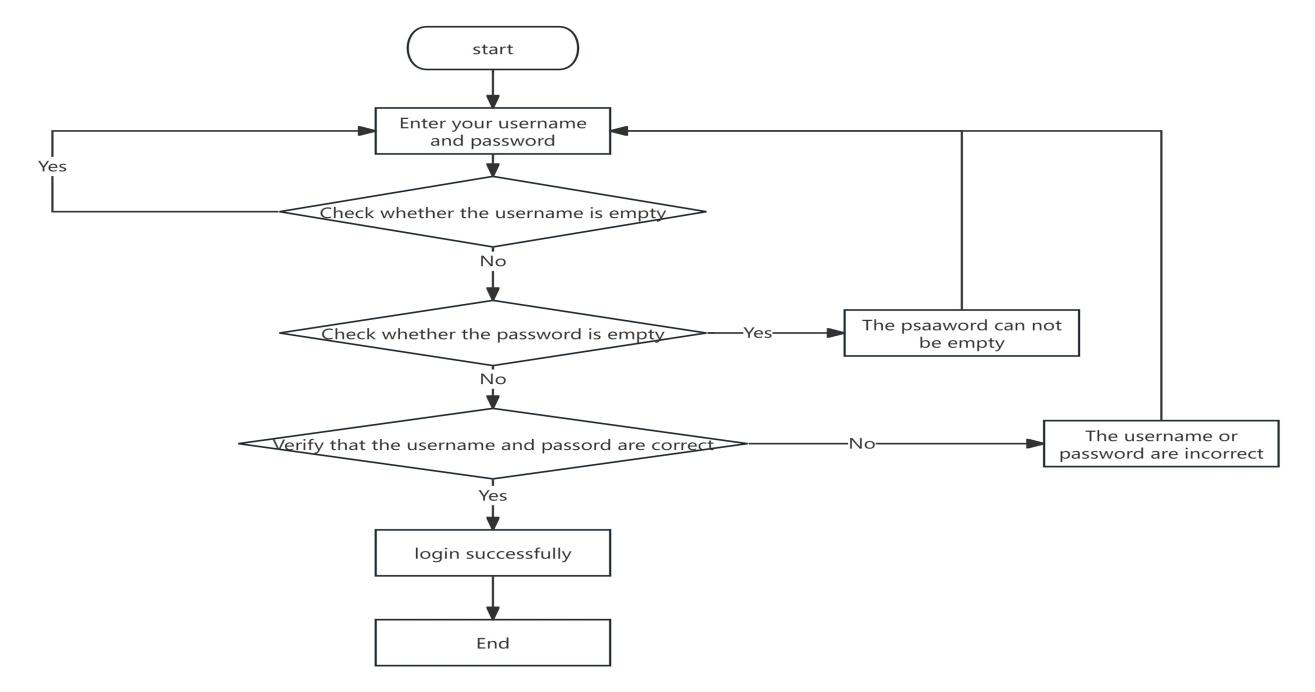
Figure 1: Log-in flow chart
4.8. System Registration Process
Users can register by entering information such as username, password, and name. The flowchart for the registration process is shown in Figure 2.

Figure 2: registration flow chart
4.9. System Functional Module Design
The system is primarily divided into system administrator and user management. The detailed overall functional module diagram of the system is shown in Figure 3, Figure 4.

Figure 3: Overall Functional Module Diagram for Administrators

Figure 4: User Functional Module Diagram
4.10. Database Design
Taking the student information function module as an example, see Table 1.
Table 1: Student Information Table
Serial Number | Column Name | Data Type | String Length | Decimal Poimt | Identifier | Primary key | foreign key | Allow Nulls | Default Value | Description |
1 | KidsName | couchDB | 999999 | No | Yes | |||||
2 | Age | couchDB | 999999 | No | No | |||||
3 | KidsName | couchDB | 999999 | No | Yes | |||||
4 | School | couchDB | 999999 | No | Yes | |||||
5 | Classroom | couchDB | 999999 | No | Yes | |||||
6 | Birth | couchDB | 999999 | No | Yes | Bound to age |
All data types are CouchDB, which has no length restrictions, so the length values are infinite. Regarding the age field, it is determined based on the date of birth, and thus, the age will be automatically calculated using an addition or subtraction algorithm based on the current date and the date of birth.
5. Data Collection System Implementation
5.1. System Login Interface
When users enter the website to log in, the system checks whether the entered information is correct. If the information is correct, access is granted; if incorrect, a login error is displayed, and the user is returned to the login interface. The primary function of this interface is to verify the username, password, and user identity of those using the system, ensuring that only authorized users can access it. The system login interface is shown in Figure 5.

Figure 5: System Login Interface
5.2. Data Collection Function
This includes the collection of student attendance data and student information. Users can add, delete, modify, and query student information, as well as view student attendance records. Both users and administrators can use this function. As shown in Figures 6 and 7.
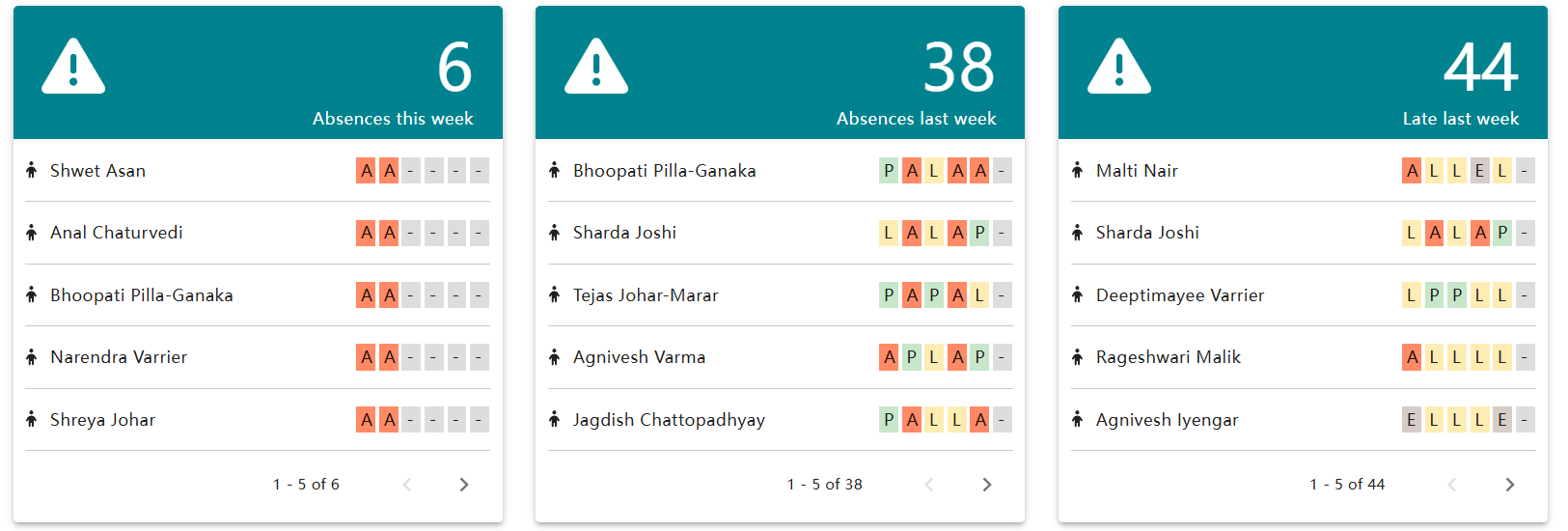
Figure 6: Student Attendance Data Interface
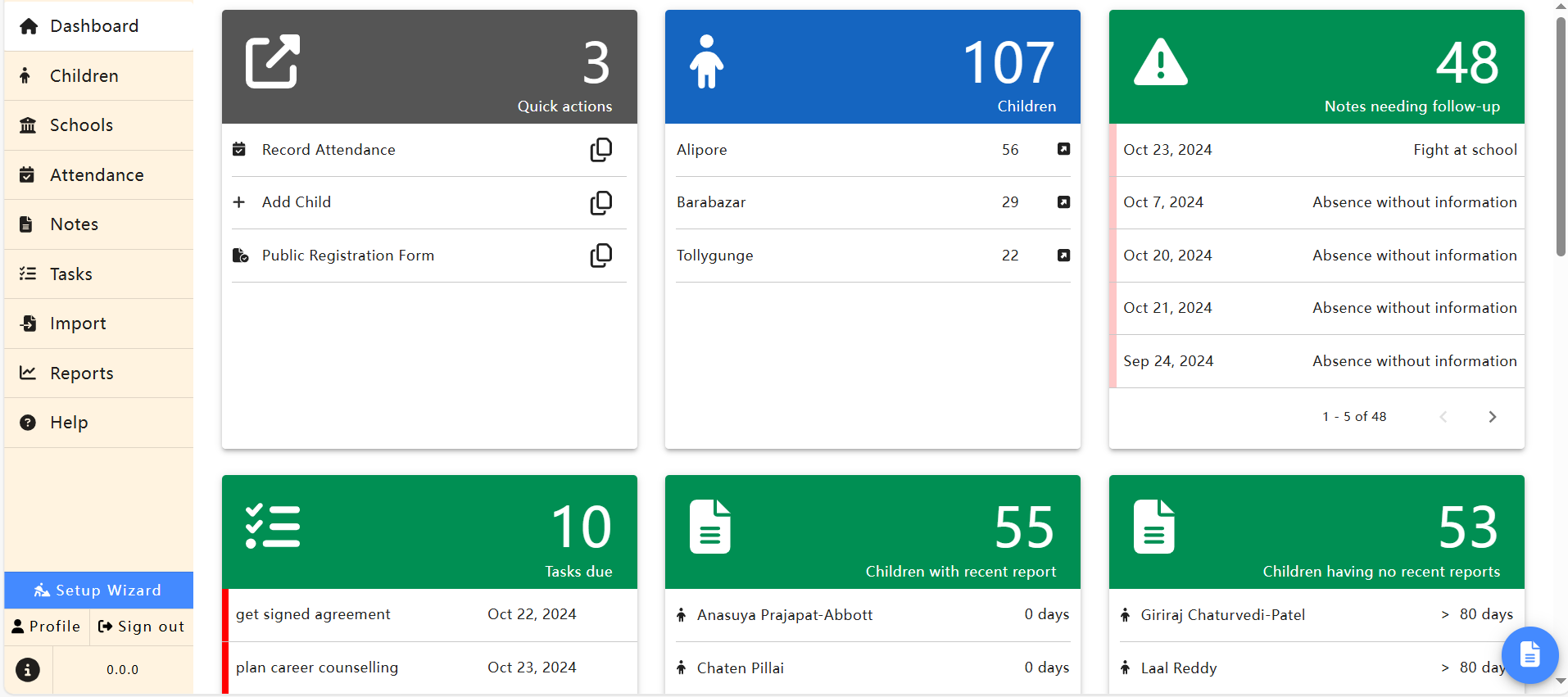
Figure 7: Student Information Collection Interface
5.3. Data Push Function
The student event information management module includes a push function, specifically for the tasks and notes modules. Information from these two modules can be pushed to administrators. The notes module is used to record students' daily issues, while the tasks module records problems that students need to address. Both users and administrators have access to this function. As shown in Figures 8 and 9.
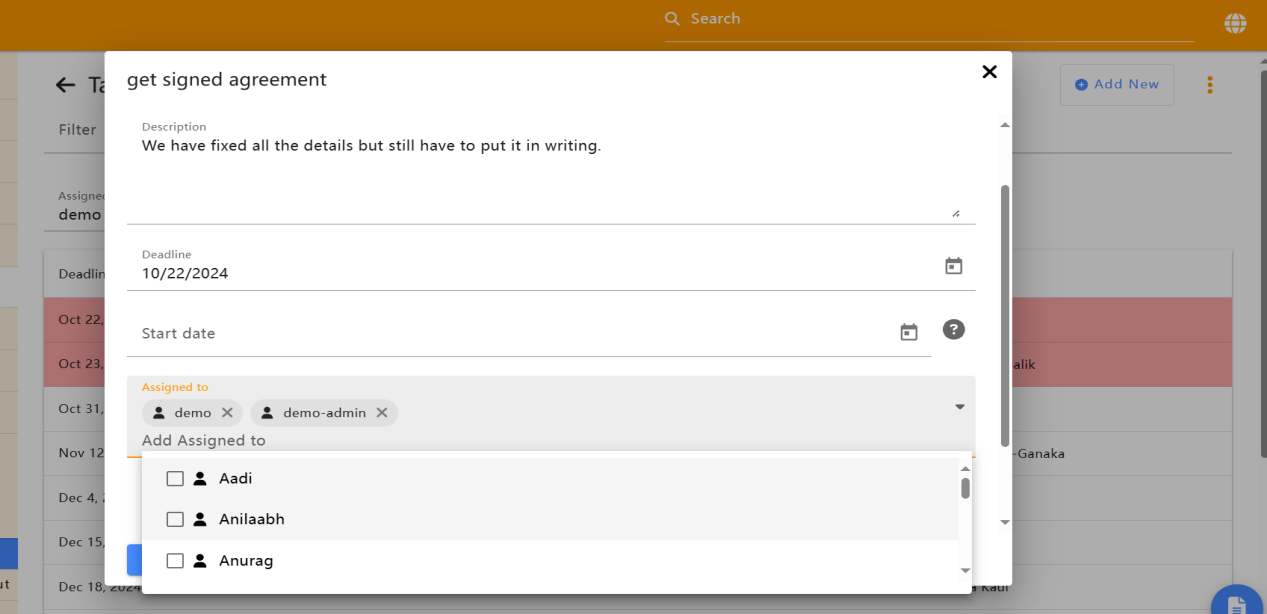
Figure 8: Task Module Push Interface
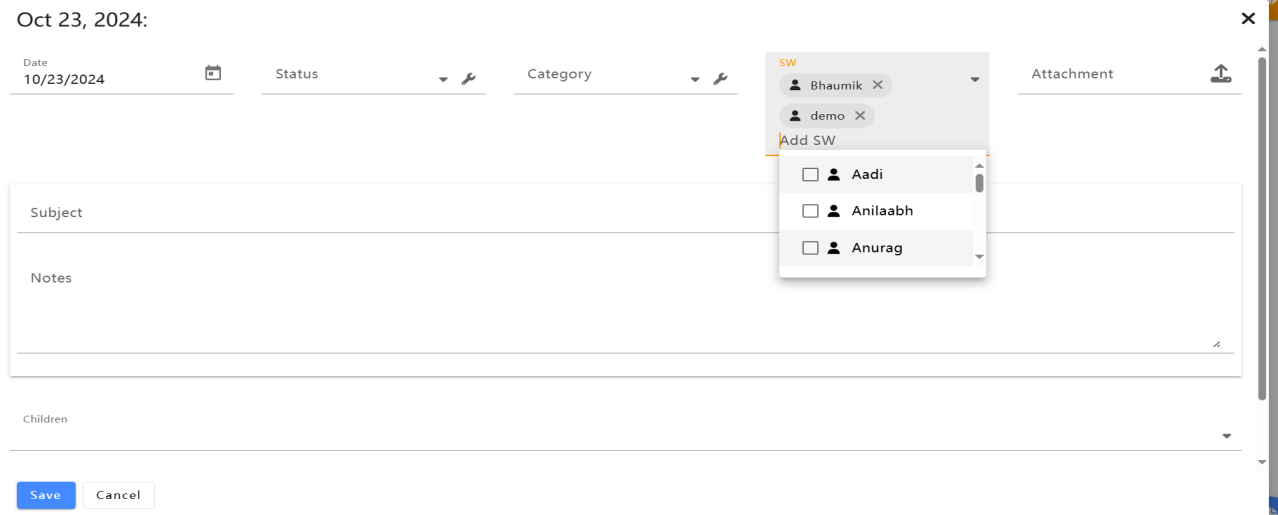
Figure 9: Notes Module Push Interface
5.4. User Management Interface
The user management function is exclusive to administrators and not accessible to regular users. Administrators can view user information and contact details, and perform add, delete, modify, and query operations on user data. As shown in Figure 10.
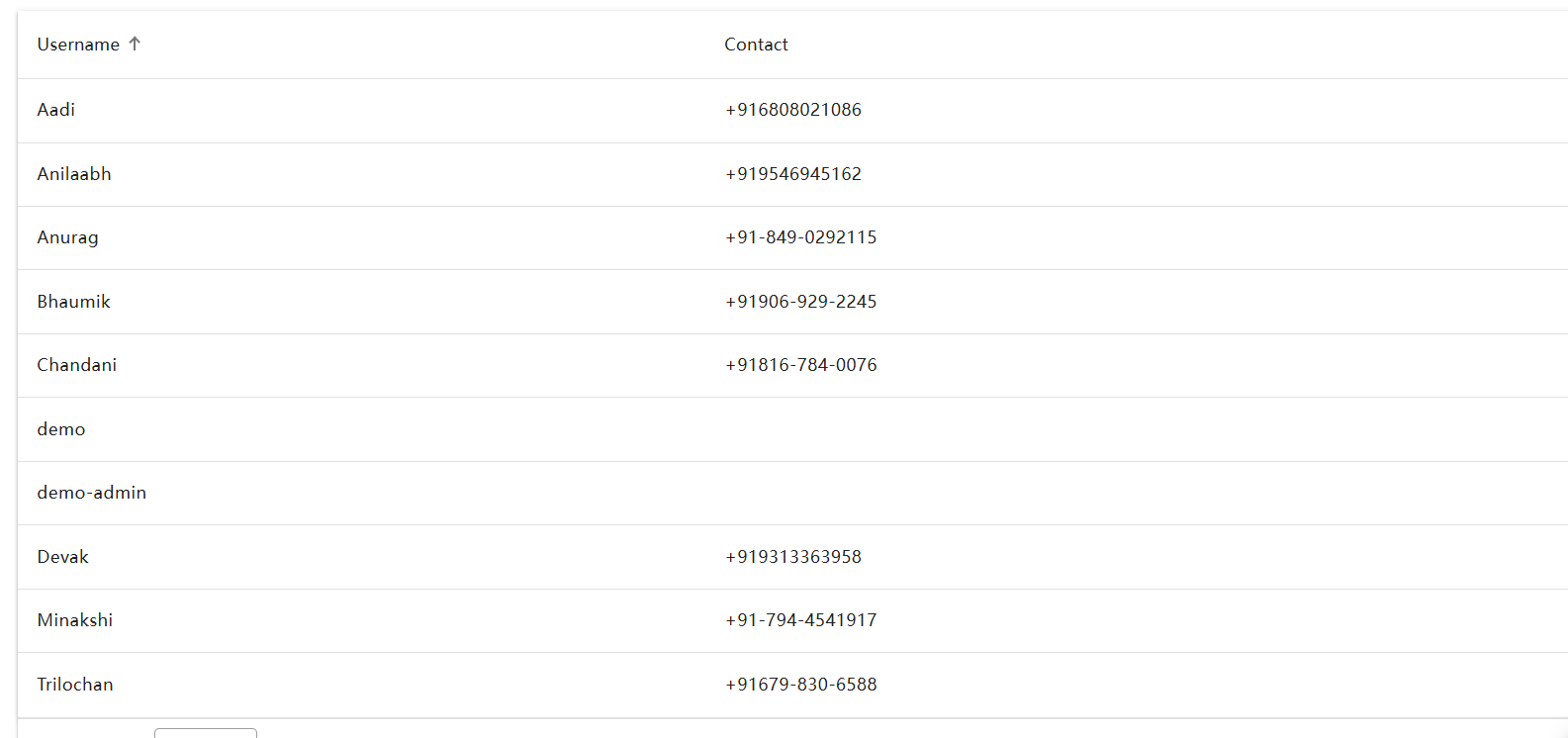
Figure 10: User Management Interface
5.5. System Management Interface
This function is also exclusive to administrators and not accessible to regular users. Administrators can use this interface to export data to the database, connect to the database from the front-end webpage, and facilitate web page modifications. As shown in Figure 11.
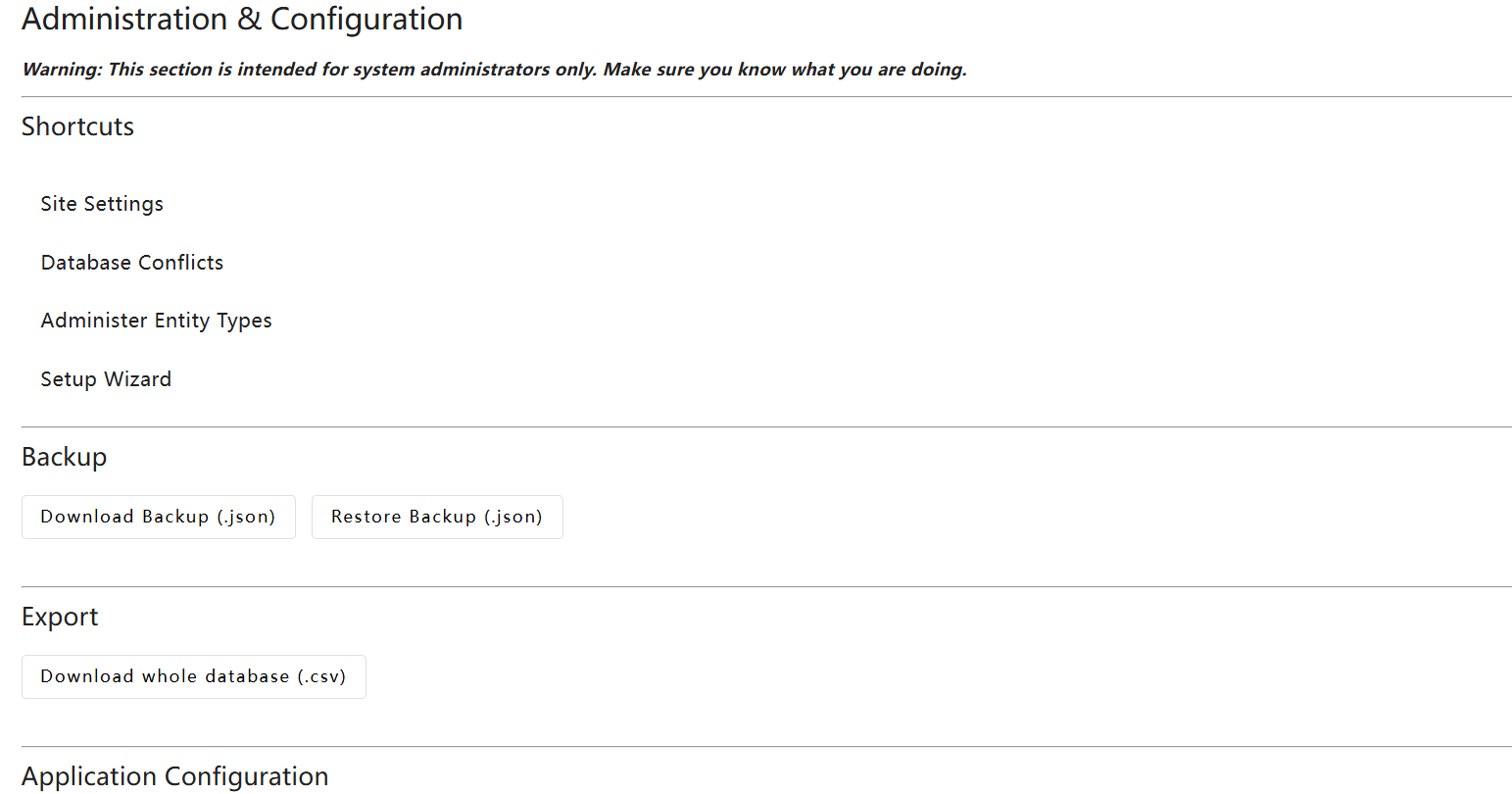
Figure 11: System Management Interface
6. Conclusion
The main work of this paper is to design and implement a Python-based multimodal data collection and push system aimed at enhancing the efficiency of collecting, processing, and pushing multimodal data in campus management. Multimodal data fusion can integrate multiple data types such as text, images, audio, etc. to mine comprehensive information value, providing convenient input methods. Utilizing PostgreSQL for data storage and management, the system features real-time push capabilities to ensure timely data delivery to users. Through modular system design, it offers good scalability and flexibility to adapt to different scenarios and needs. The advantage of this system is it can integrate multiple modal data resources, providing comprehensive information services to users. Deep learning-based recommendation algorithms significantly improve recommendation accuracy and personalization. And the flexible system architecture is easy to extend and maintain. But multimodal data processing technology is relatively complex and requires a high technical threshold. Cross-modal data fusion and semantic alignment still face challenges. And system performance may be limited by hardware resources and network environment. The Python-based multimodal data collection and push system effectively improves data management efficiency and provides personalized data information services to users. Continuous optimization based on user feedback enhances the precision and intelligence of data analysis. Looking ahead, the system could further optimize cross-modal data fusion algorithms to improve data processing accuracy and be applied to broader fields, for example, in medical data storage, a hierarchical storage approach is used to classify and store patients' basic information, examination reports (multi-modal such as images and text), etc. for quick retrieval and accurate analysis, thereby providing better data support for medical decision-making.
Authors Contribution
All the authors contributed equally and their names were listed in alphabetical order.
References
[1]. Yu, W, & Zhou, J. (2024). Emotional Analysis Model of College Students' Online Learning Based on Multi-modal Data Fusion. Journal of Huainan Normal University, 26(01), 130 - 135.
[2]. Li, J. (2024). Multi-modal Learning Analysis Based on Intelligent Technology: Connotation, Model, Challenge. China Educational Technology Equipment, 26(01), 26 - 30 + 37.
[3]. Song, H. (2024). Research on Convolutional Neural Network Model Quantification Method. Shijiazhuang Tiedao University.
[4]. Liu, B. (2022). Research and Application of Intelligent Recommendation System Based on User Behavior Characteristics. University of Electronic Science and Technology, DOI:10.27005/d.cnki.gdzku.2022.004265.
[5]. Yuan, H., Tang, Y., Xu, W., et al. (2021). Exploring the influence of multimodal social media data on stock performance: an empirical perspective and analysis. Internet Research, 31(3), 871 - 891.
[6]. Wiencrot, A., O'Doherty, K., Lawrence, D., et al. (2024). Transitioning an In-Person Survey of Older Adults to Multi-Mode Data Collection. The journals of Gerontology, Series B, Psychological sciences and social sciences.
[7]. Li, Z., Xu, K., Chada, C. N., et al. (2024). Curating retrospective multimodal and longitudinal data for community cohorts at risk for lung cancer, Cancer biomarkers: section A of Disease markers.
[8]. Su, M., Cui, M., & Huang, X., et al. (2020). Multimodal Data Fusion in Learning Analytics: A Systematic Review. Sensors, 6856.
[9]. Mangaroska, K., Martinez-Maldonado, R., Vesin, B., et al. (2021). Challenges and opportunities of multimodal data in human learning: The computer science students' perspective. Journal of Computer Assisted Learning, jcal.1254.
[10]. Yu, H., Liang, Z., & Yan, Y. (2020). Multi-source Multi-modal Data Fusion and Integrated Research Progress. Information Studies: Theory & Application, 43(11), 169.
Cite this article
Huang,Y.;Yi,J.;Yin,Y. (2024). Design and Implementation of a Multimodal Data Collection and Distribution System Based on Python-Taking School Management System as an Example. Applied and Computational Engineering,120,1-10.
Data availability
The datasets used and/or analyzed during the current study will be available from the authors upon reasonable request.
Disclaimer/Publisher's Note
The statements, opinions and data contained in all publications are solely those of the individual author(s) and contributor(s) and not of EWA Publishing and/or the editor(s). EWA Publishing and/or the editor(s) disclaim responsibility for any injury to people or property resulting from any ideas, methods, instructions or products referred to in the content.
About volume
Volume title: Proceedings of the 5th International Conference on Signal Processing and Machine Learning
© 2024 by the author(s). Licensee EWA Publishing, Oxford, UK. This article is an open access article distributed under the terms and
conditions of the Creative Commons Attribution (CC BY) license. Authors who
publish this series agree to the following terms:
1. Authors retain copyright and grant the series right of first publication with the work simultaneously licensed under a Creative Commons
Attribution License that allows others to share the work with an acknowledgment of the work's authorship and initial publication in this
series.
2. Authors are able to enter into separate, additional contractual arrangements for the non-exclusive distribution of the series's published
version of the work (e.g., post it to an institutional repository or publish it in a book), with an acknowledgment of its initial
publication in this series.
3. Authors are permitted and encouraged to post their work online (e.g., in institutional repositories or on their website) prior to and
during the submission process, as it can lead to productive exchanges, as well as earlier and greater citation of published work (See
Open access policy for details).
References
[1]. Yu, W, & Zhou, J. (2024). Emotional Analysis Model of College Students' Online Learning Based on Multi-modal Data Fusion. Journal of Huainan Normal University, 26(01), 130 - 135.
[2]. Li, J. (2024). Multi-modal Learning Analysis Based on Intelligent Technology: Connotation, Model, Challenge. China Educational Technology Equipment, 26(01), 26 - 30 + 37.
[3]. Song, H. (2024). Research on Convolutional Neural Network Model Quantification Method. Shijiazhuang Tiedao University.
[4]. Liu, B. (2022). Research and Application of Intelligent Recommendation System Based on User Behavior Characteristics. University of Electronic Science and Technology, DOI:10.27005/d.cnki.gdzku.2022.004265.
[5]. Yuan, H., Tang, Y., Xu, W., et al. (2021). Exploring the influence of multimodal social media data on stock performance: an empirical perspective and analysis. Internet Research, 31(3), 871 - 891.
[6]. Wiencrot, A., O'Doherty, K., Lawrence, D., et al. (2024). Transitioning an In-Person Survey of Older Adults to Multi-Mode Data Collection. The journals of Gerontology, Series B, Psychological sciences and social sciences.
[7]. Li, Z., Xu, K., Chada, C. N., et al. (2024). Curating retrospective multimodal and longitudinal data for community cohorts at risk for lung cancer, Cancer biomarkers: section A of Disease markers.
[8]. Su, M., Cui, M., & Huang, X., et al. (2020). Multimodal Data Fusion in Learning Analytics: A Systematic Review. Sensors, 6856.
[9]. Mangaroska, K., Martinez-Maldonado, R., Vesin, B., et al. (2021). Challenges and opportunities of multimodal data in human learning: The computer science students' perspective. Journal of Computer Assisted Learning, jcal.1254.
[10]. Yu, H., Liang, Z., & Yan, Y. (2020). Multi-source Multi-modal Data Fusion and Integrated Research Progress. Information Studies: Theory & Application, 43(11), 169.





